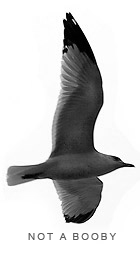Football-shaped globs
In the learn-something-new-everyday category, I now know what a quenelle is. Sort of, anyway. We dined last evening with friends at the excellent Uptown restaurant, Lilette. I couldn't resist this description from the dessert menu: "Quenelles of goats cheese crème fraiche with poached pears, pistachios, and lavender honey."
On inquiry our waiter told me that a quenelle is a "football shape," and that these were "globs" of goat cheese. Sounds appetizing, right? In spite of her description, I ordered the dish, and it was delicious, decadent and, well, primarily two football-shaped globs of goat cheese. Nevertheless, lacking all confidence that the waiter's definition was correct in any formal sense, I turned to Google later in the evening.
The most complete information comes from a private web project by hobbyist in the etymology of words, who offers this:
"The definition is found in most dictionaries: 'A seasoned ball whose chief ingredient, meat or fish, has been reduced to a paste' is what the OED says. The American Heritage Dictionary gives this definition: 'a ball or dumpling of finely chopped meat or seafood bound with eggs and poached in stock or water.' Each definition provides slightly different information. Neither is incorrect, though the OED is more correct with its suggestion that the meat of fish has been reduced to a paste. Anyhow, now that we know what a quenelle is, where does the word come from? Surprisingly, the OED says it is a mystery, but other sources claim that quenelle derives from German Knödel 'small dumpling', the Middle High German diminutive of knode 'knot', presumably referring to the shape of the quenelle. The Old High German form was knodo, cognate with Latin nodus and English node. The Indo-European root would then be *ned- 'to bind, to tie'. Surprisingly, English knot is not thought to be related, but comes instead from a Germanic root meaning 'round lump' versus 'something tied'. Some sources do believe that Knödel and noodle are related. Italian gnocchi 'dumpling' comes from the same Indo-European root, *ned-."
For my main dish I had the day's special, a Lane Snapper. The football-shaped-glob lady, told me that "Lane Snapper was like a Red Snapper but from smaller bodies of water, a fresh water snapper." That didn't sound right to me either. So, I learned a second new thing yesterday: Lane Snappers are very much like Red Snappers and inhabit the same waters.
Even though we didn't have the most well-informed waiter, our experience at Lilette was, as it has been consistently, an excellent one.
On inquiry our waiter told me that a quenelle is a "football shape," and that these were "globs" of goat cheese. Sounds appetizing, right? In spite of her description, I ordered the dish, and it was delicious, decadent and, well, primarily two football-shaped globs of goat cheese. Nevertheless, lacking all confidence that the waiter's definition was correct in any formal sense, I turned to Google later in the evening.
The most complete information comes from a private web project by hobbyist in the etymology of words, who offers this:
"The definition is found in most dictionaries: 'A seasoned ball whose chief ingredient, meat or fish, has been reduced to a paste' is what the OED says. The American Heritage Dictionary gives this definition: 'a ball or dumpling of finely chopped meat or seafood bound with eggs and poached in stock or water.' Each definition provides slightly different information. Neither is incorrect, though the OED is more correct with its suggestion that the meat of fish has been reduced to a paste. Anyhow, now that we know what a quenelle is, where does the word come from? Surprisingly, the OED says it is a mystery, but other sources claim that quenelle derives from German Knödel 'small dumpling', the Middle High German diminutive of knode 'knot', presumably referring to the shape of the quenelle. The Old High German form was knodo, cognate with Latin nodus and English node. The Indo-European root would then be *ned- 'to bind, to tie'. Surprisingly, English knot is not thought to be related, but comes instead from a Germanic root meaning 'round lump' versus 'something tied'. Some sources do believe that Knödel and noodle are related. Italian gnocchi 'dumpling' comes from the same Indo-European root, *ned-."
For my main dish I had the day's special, a Lane Snapper. The football-shaped-glob lady, told me that "Lane Snapper was like a Red Snapper but from smaller bodies of water, a fresh water snapper." That didn't sound right to me either. So, I learned a second new thing yesterday: Lane Snappers are very much like Red Snappers and inhabit the same waters.
Even though we didn't have the most well-informed waiter, our experience at Lilette was, as it has been consistently, an excellent one.




0 Comments:
Post a Comment
Links to this post:
Create a Link
<< Home